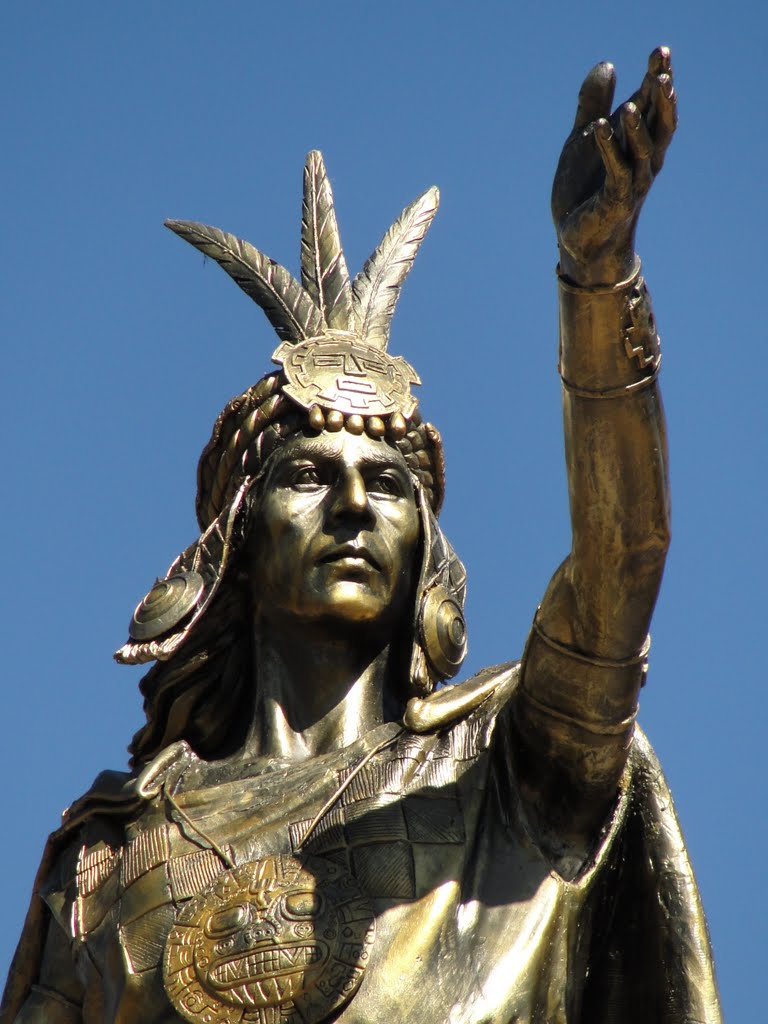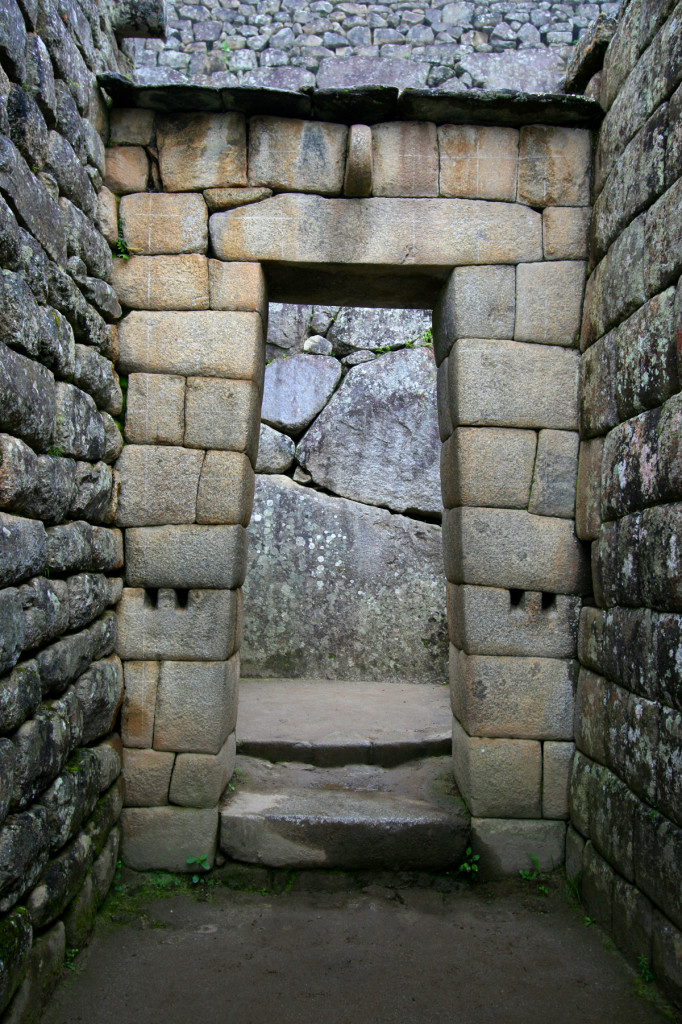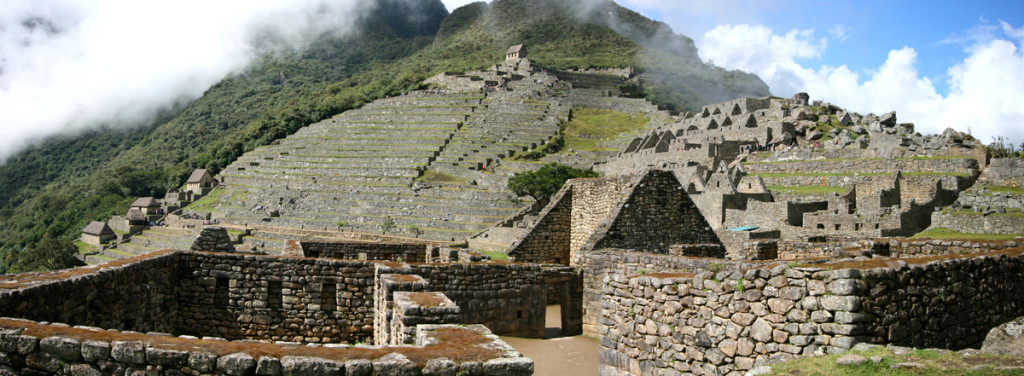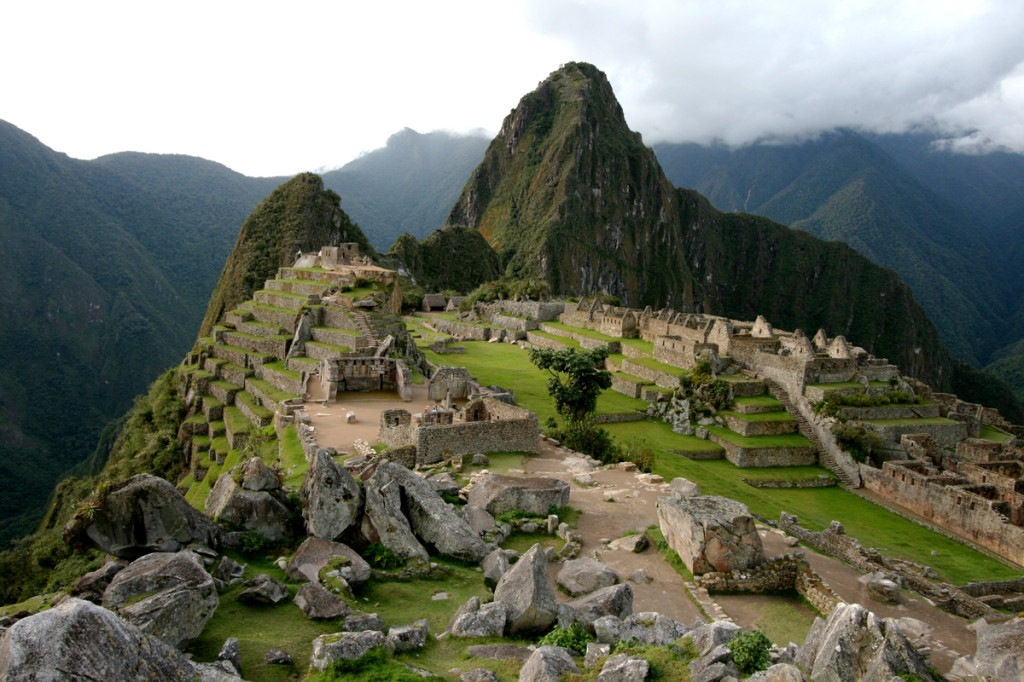Pachacutec: Incan Emperor Who Created Machu Picchu
posted on September 11th, 2014 in Incas, Machu Picchu, Peru

Pachacutec: The Incan Emperor Who Built Machu Picchu
By Kim MacQuarrie
(Excerpt from the book, Machu Picchu: Song of Stone)
According to Inca oral history, in the early part of the 15th century an Inca king arose who would not only revolutionize the entire Andean world but who would also create some of the finest architectural monuments ever known. At the time, the Incas lived within a small kingdom centered around the valley of Cuzco, one of many such small kingdoms in the Andes and on the coast. The Incas told the Spaniards that, at the time, they were led by an old Inca king named Viracocha Inca. Faced with an approaching army from the powerful kingdom of the Chancas, the Inca ruler fled, leaving his adult son, Cusi Yupanqui, behind. The latter quickly took charge, raised an army, and somehow miraculously defeated the invaders. Cusi Yupanqui then deposed his father, arranged for his own coronation, and changed his name to Pachacutec, a Quechua word that means “earth-shaker” or “cataclysm,” or “he who turns the world upside down.” The name was a prescient one, for Pachacutec would soon turn the status quo of the Andes entirely upside down.
According to Inca history, Pachacutec had had a profound religious experience when he was young, a sort of epiphany that revealed to him both his divine nature and a vision of a nearly unbounded future. Wrote the Jesuit priest Bernabé Cobo:
It is said of this Inca [Pachacutec], that before he became king, he went
once to visit his father Viracocha, who was . . . five leagues from Cuzco,
and as he reached a spring called Susurpuquiu, he saw a crystal tablet fall
into it; within this tablet there appeared to him the figure of an Indian
dressed in this way: around his head he had a llauto like the headdress of
the Incas; three brightly shining rays, like those of the sun, sprang from
the top of his head; some snakes were coiled around his arms at the
shoulder joints . . . and there was a kind of snake that stretched from the
top to the bottom of his back. Upon seeing this image, Pachacutec became
so terrified that he started to flee, but the image spoke to him from inside
the spring, saying to him: “Come here, my child; have no fear, for I am
your father the Sun; I know that you will subjugate many nations and
take great care to honor me and remember me in your sacrifices”; and,
having said these words, the vision disappeared, but the crystal tablet re-
mained in the spring. The Inca Pachacutec took the tablet and kept it; it is said that
after this it served him as a mirror in which he saw anything he wanted,
and in memory of his vision, when he was king, he had a statue made of
the Sun, which was none other than the image he had seen in the crystal,
and he built a temple of the Sun called Qoricancha, with the magnifi-
cence and richness that it had at the time when the Spaniards came, be-
cause before it was a small and humble structure. Moreover, Pachacutec ordered
that solemn temples dedicated to the Sun be built throughout all the
lands that he subjugated under his empire, and he endowed them with
great incomes, ordering that all his subjects worship and revere the Sun.
Soon after becoming king, Pachacutec wasted no time in remaking the world according to his unique vision, beginning with the city of Cuzco. There, he undertook a major rebuilding campaign, reorganizing the layout of the capital, tearing down old buildings, creating new boulevards, and ordering a host of palaces and temples to be built. All of these were constructed in a new style of stonework that Pachacutec preferred–later referred to as the imperial style–stones cut and fitted together so perfectly that the skill and artistry displayed would eventually become famous as one of the wonders of the New World.

Trapezoidal doorway at Machu Picchu
Not satisfied with defeating the Chancas, however, the ambitious young king soon led his army into the nearby Yucay (Vilcanota) and Vilcabamba Valleys, conquering a number of ethnic groups. To celebrate these victories, Pachacutec ordered the construction of a number of royal estates: one in Pisac, another at Ollantaytambo, and a third that would eventually be known as Machu Picchu. The three estates were unusual, however, in that they were destined to be privately owned by the conqueror himself. It was a model that would soon be copied by succeeding Inca emperors and also by a small number of high-ranking Inca elites. Theirs would be the only privately held lands within the rapidly expanding Inca Empire.
Pachacutec created his new estates with a number of specific purposes in mind, perhaps the most important of which was to support his own family lineage. Each new Inca emperor was supposed to found his own panaca, or descent lineage, in essence becoming the patriarch and founder of a new family line. The crops and animal herds raised on Pachacutec’s private estates were thus slated to be used to support the members of his royal panaca. After his death, the estates would continue to be used and maintained by his descendants.
A second purpose for building the royal estates was to commemorate Pachacutec’s recent conquests: when complete, they would serve as monuments that would reflect the new emperor’s boldness, initiative, and power. Finally, the estates were also meant to serve as secluded royal retreats–luxury resorts located well away from the capital where the emperor and a select group of relatives and elites could rest, relax, and commune with the local mountain gods.
As with the new palaces and buildings he had ordered built in Cuzco, Pachacutec was first presumably shown models of his proposed estates in clay, complete with the projected buildings, agricultural terraces, and temples. Once Pachacuti had approved the designs, a legion of the kingdom’s finest architects, engineers, stonecutters, and masons went to work.
Pachacutec Creates Machu Picchu
To commemorate his conquest of the Vilcabamba Valley, Pachacutec ordered his third royal estate to be built on a high ridge overlooking what is now called the Urubamba River. The Incas apparently called the new site Picchu, meaning “peak.” Since the proposed citadel and nearby satellite communities were planned from the start to form part of a luxurious private estate, the entire complex would display some of the finest examples of Inca engineering and art.
The complex of what is now known as the ruins of Machu Picchu, in fact, was carefully planned and designed long before the first white granite block was ever cut and moved into place. The location, first of all, had to be both suitably sacred and spectacular; the site that Pachacuti selected was set high atop a ridge with an almost God-like view over the entire area and of the surrounding apus, or sacred peaks. It was essential that the site also contain a source of clean water-a substance sacred in itself-that could be used for drinking, bathing, and for ritual purposes. Picchu, in fact, possessed just such a crucial characteristic: on the large peak now known as Machu Picchu, and high above the proposed citadel, Inca engineers located a natural spring. They then designed a gravity-fed water system that would eventually carry water down from the peak to the ridge top site where it would ultimately pass through sixteen descending ritual fountains.
Portions of the ridge top were now carefully planed and flattened as workers created foundations of gravel, stones, and even subterranean retaining walls. Archaeologists who have excavated at Machu Picchu have reported that some 60 percent of the architectural engineering associated with the ruins actually lies beneath the ruins. Because of the heavy granite architecture and the region’s equally heavy rains, Inca engineers had to be certain that the locations chosen for building had solid foundations capable of withstanding both water and weight. Once the foundation was complete, construction finally began on the citadel itself, with workers cutting stone mainly from a quarry located on the same ridge top, using a variety of stone and bronze tools. Only once the first stone blocks had been cut did construction begin on the buildings, palaces, and temples of Machu Picchu.
Workers and specialists from around the country now convened on the remote site, all of them supervised by a bevy of architects and engineers. In order to equip the citadel with the latest, state-of-the-art technology, Inca astronomers worked alongside the engineers and stonemasons to fashion observatories that could accurately mark the summer and winter solstices as well as other astronomical events. Workers fulfilling their mit’a labor tax, meanwhile, busied themselves constructing roads to and from the royal estate, linking Machu Picchu with the capital, Cuzco, and with other newly built centers, such as Ollantaytambo, Pisac, and, eventually, Vitcos and Vilcabamba. Additional laborers were also put to work constructing large agricultural terraces in order to help provide food for the citadel’s future inhabitants as well as for ritual sacrifices. Soon, Inca labor and technology had transformed the steep, jungle-covered slopes into a staggered series of flat terraces that eventually produced fourteen acres of sacred corn.
When Machu Picchu was finally ready for use sometime in the 1450s or 1460s, the first ruler of the newly created Inca Empire, Pachacutec, no doubt arrived there on his royal litter, accompanied by royal guests, a large retinue of servants, and at least part of his harem. The citadel’s furnishings, plumbing, food, supplies, servants, and cooks had all been carefully prepared so that the emperor would be able to relax along with his guests. Then, as now, clouds wreathed the surrounding peaks, alternately exposing and obscuring them. Unlike the ruins today, however, the gabled roofs of the buildings were covered with fresh yellow ichu thatch while the stones of the citadel were white and freshly cut and glistened in the sun.

Temple Complex at Machu Picchu
Similar to the recent architecture in Cuzco, much of the stonework at Machu Picchu had been cut in the imperial style that Pachacutec preferred; some of the buildings, in fact, were constructed with boulders the size of small cars, each cut, fitted perfectly into place, and weighing up to fourteen tons. The water from the nearby peak of Machu Picchu, meanwhile, descended into the citadel through a stone-lined aqueduct and arrived first at Pachacutec’s living quarters, thus allowing the emperor to come into contact with only the purest water available. A stone-cut pool in Pachacutec’s dwelling allowed the emperor to bathe in complete privacy while the emperor’s residence also had the only water-flushed lavatory at Machu Picchu.
As Pachacutec bathed himself in his private bath, the voices of his guests would have floated across the plaza outside along with the distant sounds of metalworkers tending their forges and hammering out gold and silver ornaments, utensils, and jewelry. Strings of llama trains constantly arrived, looking from a condor’s perspective like lengths of knotted quipu cords; the food and supplies they carried up from the jungle and down from the Andes was carefully unpacked at a station just outside the citadel. Even at this private retreat, chaski runners appeared periodically with messages for the emperor and other officials, who in turn sent their commands back to Cuzco and to other parts of the empire. Wherever the emperor went, in fact, his royal court followed. Thus, whenever Pachacutec was in retreat at Machu Picchu, this lofty, isolated citadel temporarily became the power center and locus of the entire Inca world.
Machu Picchu During the Time of Pachacutec: A Royal Estate
Unlike the ruins of Machu Picchu today–which are owned by the Peruvian state and are open to the public, and where tour buses disgorge hundreds of thousands of visitors each year–Machu Picchu in the time of Pachacutec was an exclusive and private affair. The roads here–like the roads elsewhere in the empire–were open only to those individuals traveling on state business. Other than Pachacutec’s immediate family, the workers who kept the citadel functioning, and the invited elites who traveled here on canopied litters, often decorated with precious metals and iridescent bird feathers, Machu Picchu was unknown to the rest of the empire’s inhabitants. Machu Picchu, quite simply, was Pachacutec’s Camp David–a royal resort built by a man who had almost single-handedly transformed a small native kingdom into the largest empire the New World has ever known.
The citadel of Machu Picchu was thus the third and perhaps most important jewel in the crown of architectural monuments that Pachacuti had created, after Pisac and Ollantaytambo. Balmy and warm, the site was no doubt a welcome respite from the often freezing winter weather of the Inca capital and from the high Andes in general. Even after Pachacutec’s death and long after the emperor had been ritually embalmed and mummified, Pachacutec’s servants no doubt continued bringing their divine emperor to visit Machu Picchu and to visit the other estates he had carved out of the Andes, his sightless eyes seeming to gaze off into the distance as the members of his royal panaca continued to enjoy the fruits of their founder’s unparalleled conquests and labors.

The ruins of Pachacutec’s royal retreat of Machu Picchu
